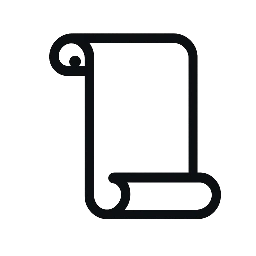In our fast-paced work environments, job pressure can feel overwhelming. In our latest video, titled ‘Discovering Clarity in Job Pressure Through Stoicism and the Dichotomy of Control’, we delve into the ancient wisdom of Stoicism and how its principles can provide clarity amidst chaos. Stoicism teaches us to focus on what we can control and to accept what we cannot. By applying these principles to our work lives, we can cultivate a sense of peace and purpose.
During moments of high stress, it is easy to feel trapped by external circumstances. However, Stoicism encourages us to redefine our perceptions. The Dichotomy of Control, a key Stoic concept, helps us identify which aspects of our work are within our control and which are not. By prioritizing our actions and reactions, we empower ourselves to handle job pressure more effectively. This approach not only enhances our productivity but also improves our overall well-being.
The Power of the Dichotomy of Control
The Dichotomy of Control consists of two categories: what is up to us (our thoughts, choices, and actions) and what is not (the outcomes of those actions). Understanding this distinction allows professionals to channel their energy where it is most effective. For instance, during a high-stakes presentation, while you may not control the audience’s response, you can control how well you prepare and deliver your message. This clarity helps reduce anxiety and enhances performance.
Embracing this dichotomy also encourages a more resilient mindset. Knowing that certain external factors are beyond our influence can help us detach from needless worry. We learn to better navigate workplace challenges by focusing on our responses rather than fixating on uncontrollable outcomes. This shift in perspective can lead to improved job satisfaction and lower stress levels. It’s an invaluable lesson for anyone facing pressure at work.
Applying Stoic Principles Daily
Integrating Stoicism into daily work life can profoundly impact how we manage stress. Start with morning reflections: take a moment to set intentions for the day. Recognize potential challenges and remind yourself of the Stoic principle of acceptance. This proactive mindset can prepare you for the inevitable pressures that may arise throughout the day.
Additionally, practicing gratitude can further enhance your Stoic journey. Acknowledging the positives amidst challenges can shift your focus from stressors to what is going well. Keep a journal to document daily reflections, including what you could control and how you responded to various situations. This practice not only solidifies your Stoic training but also provides valuable insights for future challenges.
The Importance of Community
Stoicism is not just a solitary practice; it can be incredibly beneficial to connect with others who share similar values. Building a community with colleagues or friends who appreciate Stoic principles can create a supportive environment where everyone strives for clarity and resilience. Engaging in discussions about Stoic teachings can enhance your understanding and application of these timeless principles.
Moreover, accountability within a community can motivate individuals to adopt Stoic practices consistently. Sharing experiences and struggles can lead to precious insights and collaborative problem-solving. Ultimately, fostering connections around Stoicism can transform how you perceive and handle job pressure, making it a shared journey toward clarity.
Resources for Further Learning
If you are intrigued by the concepts discussed, there are numerous resources available to deepen your understanding of Stoicism. Books by philosophers such as Marcus Aurelius and Epictetus offer invaluable insights. Online courses focusing on Stoic practice in modern life can also be beneficial. Delving into these materials can further enhance your ability to manage job pressure through a Stoic lens.
Moreover, consider exploring podcasts and discussions that center on Stoic themes. Engaging with different formats can provide diverse perspectives, enriching your grasp of how to apply Stoicism practically in your everyday life. This continuous learning is key to maintaining clarity and composure amid career pressures.
FAQ
What is Stoicism?
Stoicism is an ancient Greek philosophy that teaches the development of self-control and fortitude as a means of overcoming destructive emotions. It emphasizes the importance of virtue and wisdom while accepting the natural order of the world. Stoicism advocates focusing on what we can control and letting go of what we cannot.
How can Stoicism help with job pressure?
Stoicism helps individuals manage job pressure by providing tools to distinguish between what they can and cannot control. By embracing the Dichotomy of Control, professionals can focus their energy on effective actions rather than worrying about outcomes beyond their influence. This mindset fosters resilience and enhances performance under stress.
What are practical Stoic exercises to try?
Practical Stoic exercises include morning reflections, journaling to document thoughts and actions, and practicing gratitude. Engaging in daily affirmations about control and acceptance can also reinforce Stoic principles. Building a support system to discuss Stoicism with others can deepen your practice.
Can I integrate Stoicism with other philosophies?
Absolutely! Stoicism is compatible with various modern philosophies and practices. Many individuals find that integrating mindfulness, cognitive behavioral therapy, and other modalities with Stoic principles helps enhance their overall mental well-being. The key is to adapt these teachings in a way that resonates with you personally.
Where can I learn more about Stoicism?
To learn more about Stoicism, start with classic texts like ‘Meditations’ by Marcus Aurelius or ‘Enchiridion’ by Epictetus. Online resources, including courses, articles, and podcasts, offer additional insights. Engaging with a community of Stoicism enthusiasts can also provide support and shared learning experiences.
Watch the Video:


Leave a Reply